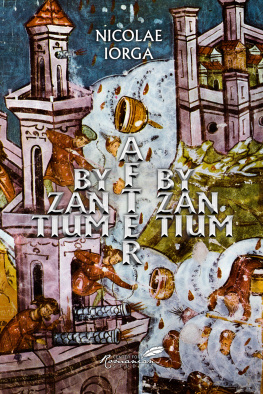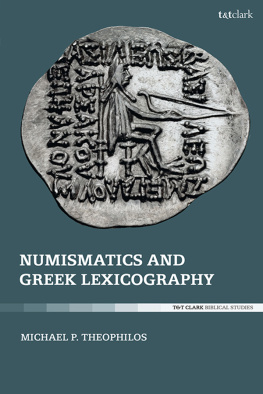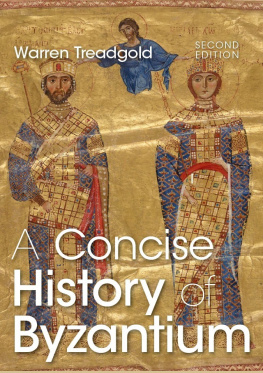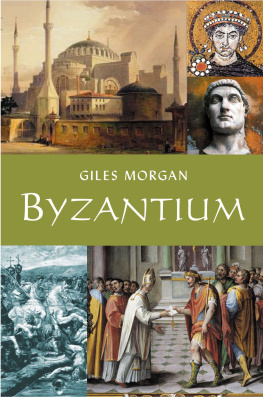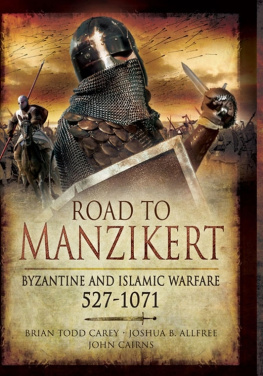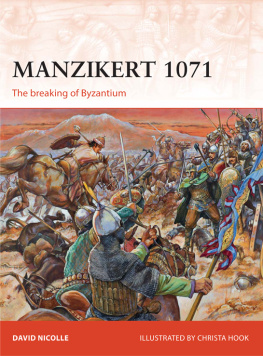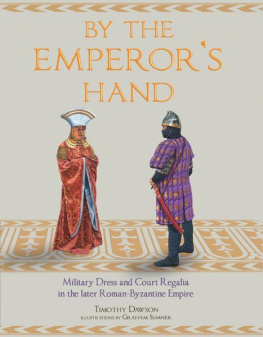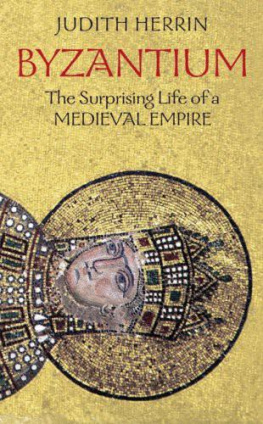THE EMPEROR THEOPHILOS AND THE EAST, 829842
BIRMINGHAM BYZANTINE AND OTTOMAN STUDIES
Volume 13
General Editors
Leslie Brubaker
A.A.M. Bryer
Rhoads Murphey
John Haldon

Centre for Byzantine, Ottoman and Modern Greek Studies University of Birmingham
The Emperor Theophilos and the East, 829842
Court and Frontier in Byzantium during the Last Phase of Iconoclasm
JUAN SIGNES CODOER
University of Valladolid, Spain

First published 2014 by Ashgate Publishing
Published 2016 by Routledge
2 Park Square, Milton Park, Abingdon, Oxon OX14 4RN
711 Third Avenue, New York, NY 10017, USA
Routledge is an imprint of the Taylor & Francis Group, an informa business
Copyright Juan Signes Codoer 2014
Juan Signes Codoer has asserted his right under the Copyright, Designs and Patents Act, 1988, to be identified as the author of this work.
All rights reserved. No part of this book may be reprinted or reproduced or utilised in any form or by any electronic, mechanical, or other means, now known or hereafter invented, including photocopying and recording, or in any information storage or retrieval system, without permission in writing from the publishers.
Notice:
Product or corporate names may be trademarks or registered trademarks, and are used only for identification and explanation without intent to infringe.
British Library Cataloguing in Publication Data
Signes Codoer, Juan.
The Emperor Theophilos and the East, 829842: Court and Frontier in Byzantiumduring the Last Phase of Iconoclasm. (Birmingham Byzantine and OttomanStudies ; v. 13)
1. Theophilos, Emperor of Constantinople, d. 842 2. Byzantine Empire History Theophilus, 829842. 3. Byzantine Empire Politics and government 5271081.4. Byzantine Empire Relations Orient. 5. Orient Relations Byzantine Empire.I. Title II. Series
949.502-dc23
The Library of Congress has cataloged the printed edition as follows:
Library of Congress Control Number: 2012952409
ISBN 9780754664895 (hbk)
Birmingham Byzantine and Ottoman Studies
Volume 13
Contents
List of Maps and Figures
Maps
Figures
Preface
In the summer semester of 1988 I attended a seminar on Theophanes Continuatus at the Freie Universitt Berlin conducted by the late Professor Paul Speck. It was my first, abrupt introduction into the field of Byzantine Studies after my degree in Classical Philology at the University of Salamanca. I was at that time unaware that I was destined to work on this fascinating history of the second iconoclasm over the years that followed, until, under the stimulating direction of Professor Antonio Bravo Garca (Universidad Complutense of Madrid), in Salamanca in September 1993, I finally obtained my PhD with a comparative study of the first three books of the Continuator and the contemporary history of Genesios. When my research was published two years later in Amsterdam (Signes Codoer 1995), I stopped thinking about the text for several years and began working on other authors and periods, for it seemed to me that I needed to deepen my knowledge of Byzantine literature and historiography.
It was only after more than 10 years that I came back to the text in 2006 on the occasion of a summer research stay of three months at the University of Birmingham. There I met Leslie Brubaker and discussed with her the possibility of publishing a historical monograph on the emperor Theophilos based mostly on the evidence provided by the Continuator. She immediately welcomed my idea, so I submitted to her a draft of the project even before leaving Birmingham at the end of August. The plan was approved some weeks later by John Smedley of Ashgate Publishing. By then, during the 21st International Congress of Byzantine Studies held in London in 2006, I happened to meet Michael Featherstone (CNRS Paris), who had been charged with editing the first four books of Theophanes Continuatus for the Series Berolinensis of the Corpus Fontium Historiae Byzantinae. He generously offered to share with me the editing of the text, on which we have been working since. This unexpected chance encouraged my research, for it offered me the opportunity to read the text intensively once again and thus appreciate better its structure and the working method of the anonymous author who composed it during the reign of Constantine VII.
My research, however, proceeded more slowly than I had initially imagined, especially because of the high number of complementary sources I needed to check (Greek, Arabic and Armenian) and the many secondary issues that needed to be dealt with. In order to consult bibliographies not available in Spain and also to exchange points of view with foreign colleagues, new research stays in Paris (2008), Oxford (2009, 2010) and Vienna (2010) were undertaken. I was even granted a sabbatical by the University of Valladolid for the academic year 20092010 to finish the work. I spent my leave mostly working at the Centro de Ciencias Humanas y Sociales of the CSIC in Madrid.
At the end of this process the book had grown into twice its original intended size, mostly because of the necessity of dealing with minute textual problems, which were not easy to tackle with passing references, but needed to be commented upon in some detail.
I relied on the assistance of many colleagues and friends whom I would like to mention here for their invaluable help. First of all, mention must be made of Michael Featherstone, my joint editor of the text, whose advice on many particular details always proved useful. The passages quoted from the Continuator, as well as the English translation, are taken from our common, still unpublished edition of the text. Other colleagues contributed to correcting errors in the original manuscript by reading the draft of some sections: John Haldon (). Stephen Gero, James Howard Johnston, Chris Lightfoot, Pagona Papadopoulou and Mark Swanson, among others, also gave me their advice on many particular issues. Many others also helped me with bibliographical enquiries and petitions or just encouraged my work with their friendly support. On the financial side, the study has been made possible to a great extent by funding provided by the Spanish research project FFI2012-37908-C02-01. I must also especially thank Leslie Brubaker for the painstaking reading she made of the final draft of the book, polishing my deficient English at many points and thus producing a correct text.
Finally, Arantxa and Micaela made my life easier and more colourful during the long time it took for me to put my ideas in order. For the welcome pauses needed during research I dedicate this book to them.
A note on the transcription of names: I have transliterated Greek names except for those that are most common in English (Constantine, John, Gregory, Theodore, Peter, and also Nikaia, Cappadocia etc.). For the Arabic names I use diacritics according to the usual norms in English but avoid the article when at the beginning of the name. I apologize for minor inconsistencies.
Valladolid, April 2013
Introduction: Some Short Remarks on the Methodology and Purpose of the Book
The reign of Theophilos (829842), the last iconoclast emperor, has always attracted historians of Byzantium, who tend to regard it as a crucial turning point in the history of the empire. However, the reasons for such an assessment are difficult to ascertain. Certainly, he enjoyed a relatively mild treatment in the iconophile sources, at least in contrast with the demeaning accounts of his iconoclastic forerunners, especially Leo III, Constantine V and Leo V. These same sources have preserved some family scenes of the emperor that render Theophilos figure more humane and even enable us to draw an approximate profile of his character. A legendary halo of righteousness even surrounds Theophilos in some later accounts.
Next page


